Why Reader Engagement Isn’t Just Important—It’s Everything
Let’s cut to the chase: Getting someone to click on your blog post? That’s step one. But keeping them there—really keeping them—is the real battle in today’s content-saturated internet jungle.how to write a blog post
People scroll fast. They skim. They swipe away at the slightest whiff of boredom. So if your blog doesn’t spark curiosity, emotion, or value within the first few seconds? Poof—your message disappears into the algorithmic abyss.
But here’s the good news: Captivating content isn’t magic. It’s intentional. It’s crafted. It’s knowing your reader better than they know themselves and delivering exactly what they didn’t realize they needed.
Let’s break it all down.
Know Exactly Who You’re Writing For
You can’t write content that resonates if you don’t know who’s on the other side of the screen. Imagine telling a ghost story around a campfire. Would you tell it the same way to a bunch of eight-year-olds as you would to seasoned hikers? Not a chance.
Blogging is no different.
🎯 1. Build a Reader Persona (Seriously, Do It)
Give your audience a face. A name. A backstory.
- How old are they?
- What do they care about?
- What’s their biggest struggle?
- What are they typing into Google at 2 a.m.?
Picture this: “Emily, 35, a solopreneur juggling kids, coffee, and client deadlines, desperately trying to grow her side hustle.”
Now you’re not just writing a post—you’re writing to Emily.
🧠 2. Know Their Pains Better Than They Do
Forget surface-level stats. What’s keeping your readers up at night?
Look deeper:
- Lurk in Reddit threads.
- Read Quora questions.
- Stalk Facebook groups in your niche.
- Dive into the “People Also Ask” rabbit hole on Google.
When you know their frustrations, your content becomes the answer they didn’t know they were looking for.
Start Strong or Get Scrolled Past
Your headline? It’s either a magnet or a repellent. A scroll-stopper or a scroll-past-er (yep, we’re making up words now).
🚀 1. Inject Power Words Like Adrenaline
Some words pack a punch. They buzz with energy and emotion:
- “Jaw-Dropping”
- “Secret Sauce”
- “Brilliant”
- “Game-Changing”
- “Dead-Simple”
- “Hacks You’ve Never Heard Of”
Compare:
“Ways to Improve Your Blog”
vs.
“7 Jaw-Dropping Hacks to Instantly Make Your Blog Irresistible”
Feel that? That’s power.
❓ 2. Ask, Promise, Intrigue
- “Are You Unknowingly Pushing Readers Away?”
- “How I Got 10,000 Subscribers in 30 Days Without Ads”
- “Want to Write Blogs People Actually Finish? Steal This Framework…”
But listen—don’t lie. If your headline promises a miracle, your content better deliver fireworks.
Make That Introduction Unskippable
You’ve got three seconds. Maybe less. Use them wisely.
✍️ 1. Start with a Bang (Story or Fact—You Choose)
People love stories. Even short ones. Here’s an example:
“Three years ago, I hit ‘publish’ on a post I almost trashed. No SEO tricks. No audience. Just heart. That post? It changed my life.”
Not a storyteller? Use a stat:
“Over 40% of readers never make it past the intro. If your first few lines flop, you’ve lost them.”
🔎 2. Tell Them What’s Coming
Don’t leave them hanging. Tease the value.
“In the next few minutes, I’ll walk you through the art of irresistible intros, how to structure your posts for maximum readability, and the secret to writing like a human (not a bot).”
Make them feel like reading your post is the best decision they’ve made all day.
Structure Isn’t Boring—It’s What Keeps People Reading
Let’s be blunt: If your blog looks like a high school textbook, it’s toast.
🧭 1. Guide the Eye with Subheadings & Lists
Subheadings are like neon signs on a highway: helpful, necessary, and sanity-saving.
Bullet points? Oh yes. They’re gold.
- Break up text
- Speed up scanning
- Help retention
- Reduce overwhelm
Use them wherever you can. Your readers will thank you—silently, but sincerely.
✂️ 2. Keep Paragraphs Short and Snappy
Three-line max, ideally.
Mix short and long sentences.
Avoid walls of text like your blog depends on it—because it does.
Ditch the Lecture—Write Like You’re Human
The fastest way to kill reader engagement? Sounding like a manual.
🗣️ 1. Talk to Them, Not at Them
Read your draft out loud. If you wouldn’t say it in conversation, rewrite it.
Instead of:
“It is imperative to consider multiple variables when creating a cohesive strategy…”
Say:
“Before you dive in, there are a few key things to think about.”
Contractions, humor, rhetorical questions—they’re your friends.
🙋♂️ 2. Break the Formal Wall
Speak directly to your reader:
- Use “you” and “I”
- Ask questions
- Toss in casual phrases: “let’s be real,” “you’ve probably been there,” “no biggie”
Example:
“Ever feel like your blog’s just…flat? Like no one’s reading past the first paragraph? Yep. Been there. Let’s fix that.”
Final Word: You’re Not Just Writing—You’re Connecting
Captivating content doesn’t require a degree in copywriting. It requires care. Real, honest effort to connect with the person behind the screen.
So here’s your checklist:
✅ Headlines that hook
✅ Openings that make people lean in
✅ Formatting that invites reading—not running
✅ Tone that feels human, not robotic
Don’t aim for perfection. Aim for connection.
Because someone out there needs exactly what you have to say—make sure they actually stick around to hear it.
Would you like this in blog-ready HTML format or SEO-optimized with meta descriptions and slug suggestions? more datails
Overview:
Why Reader Engagement Isn’t Just Important—It’s Everything
Let’s face it—living in the age of infinite scroll means attention is a fleeting, fragile thing. A headline might catch the eye, sure, but holding that attention? That’s an entirely different beast.
Reader engagement isn’t just a checkbox on your content strategy. It’s the heartbeat. The engine. The unspoken contract between you and the person on the other side of the screen. Without it, your post—no matter how well-researched or beautifully designed—is just background noise in a digital avalanche of distractions.
This isn’t about gaming the algorithm. It’s about earning trust, sparking curiosity, and building connection.
So, what makes someone stick around? What transforms a skimmer into a subscriber, a passerby into a fan?
Simple—but not easy.
You need irresistible headlines that pull people in like gravity. You need to speak to your reader’s soul—not just their screen. You need to make your content feel like a conversation, not a lecture. And above all, you need to write with a kind of clarity that slices through the noise like a lightning bolt.
This guide peels back the curtain on how it’s done.
Whether you’re a blogger looking to breathe life into your posts, a marketer trying to convert casual browsers into buyers, or a storyteller hoping your words linger long after the tab is closed—this is your blueprint.
Engagement isn’t a metric. It’s a relationship. And every sentence is a chance to make it stronger.
Let me know if you’d like this adapted into a tweet thread, email teaser, or blog intro snippet!


